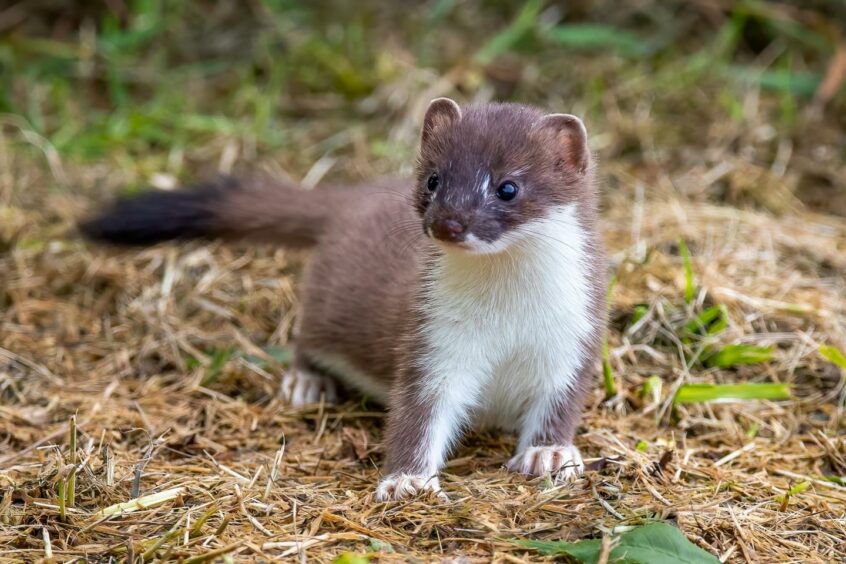The stoat bounded towards me down the forestry track, its body rippling in a smooth, sinuous motion until it spotted me and came to an abrupt halt, before dashing away into long grass to hide.
I waited a moment, and the creature flashed back out onto the track to check me out, and then disappeared once more in a blur of brown.
I had an inkling the stoat would make a brief reappearance because they are innately curious animals and will often want a second look at what initially scared them.
It is a trait of both stoats and weasels, and one that the great Scottish wildlife expert, David Stephen, remarked upon.
“The weasel that has taken refuge in an old dry-stone wall can hardly get out quickly enough to look at the person he ran away from the first place”.
Brief encounter
As I pondered this brief stoat encounter, it occurred to me that it been a while since I had last seen one and perhaps these mysterious animals were declining in numbers.
Yet, the more I thought about it, the greater my uncertainty whether this really was the case, for in all my years of wildlife watching, the stoat is a creature that I seldom encounter such is its inherent elusiveness.
This mystique has resulted in the stoat of being an integral part of country folklore right up until modern times.
The early 20th century naturalist Frances Pitt wrote that stoats hunt not only for need, but also for sport, and will kill a rabbit, leave it, and race on to run down another rabbit, and then perhaps a third.
She added: “The manner in which rabbits slain by a stoat are left lying around with merely one small wound in the neck has led many to suppose that a stoat sucks the blood of its prey, but this is not so, for it eats meat in the ordinary manner”.
Animal of instinct
Of course, a stoat is an animal of instinct, and when confronted with many rabbits in a busy warren, it is hardly surprising that one might kill several in one go.
It is simply a case of making hay while the sun shines.
Intrigued by the writings of Frances Pitt, I delved some more into early 20th century literature on stoats, and found a fascinating piece by Edward Step, another renowned naturalist of the time.
He recounted a tale of a panic-stricken rabbit running near him that was being hotly pursued by a ‘blood thirsty’ stoat.
When the rabbit become aware of Step’s presence, it changed course and ran towards him, and fell on its side exhausted at his feet.
The stoat realised its hunt had failed because the rabbit had found a ‘spoilsport protector’ and had no option other than to retreat.
Meanwhile, the panting rabbit allowed Step to carry it for half a mile in the crook of his arm until it had recovered, its natural fear of man not nearly as great as the terror inspired by the stoat.












Conversation